Engine Thermostat (Engine Thermostat) is a device used in the cooling system of an automobile engine. Its main function is to control the flow of engine coolant to maintain the engine running within the proper operating temperature range.
The engine thermostat is usually installed at the engine water intake or somewhere in the coolant circulation system. It works by using a special control element, usually a piston or expansion valve made of a waxy substance, to regulate the flow of coolant in response to changes in its temperature.
When the engine is cold started, the thermostat closes, preventing coolant from flowing into the engine cooling system. This can speed up the heating of the engine, promote the thermal effect of the combustion chamber, and reduce fuel consumption and emissions. Once the engine reaches a preset operating temperature, the thermostat opens, allowing coolant to flow into the engine cooling system and dissipate heat through the radiator.
The role of the engine thermostat is to ensure that the engine runs within the proper operating temperature range to provide optimum performance and combustion efficiency. Too low a temperature can cause incomplete combustion of fuel, increase wear and emissions, and also affect engine power output and fuel economy. Excessively high temperatures may cause the engine to overheat and damage engine components.
To sum up, the engine thermostat plays an important role in temperature control in the automotive engine cooling system, ensuring that the engine maintains stable operation within a suitable operating temperature range.
Types of engine thermostats
There are several types of engine thermostats:
- Mechanical Thermostat: A mechanical thermostat is a thermostat based on the principle of expansion. It uses a waxy or metallic piston or expansion valve to control the flow of coolant in response to changes in temperature. When the temperature rises, the piston or expansion valve expands to open the coolant channel; when the temperature drops, the piston or expansion valve contracts to close the coolant channel.
- Electronic Thermostat (Electronic Thermostat): An electronic thermostat is a thermostat that uses an electronic controller to achieve temperature control. It uses sensors to detect engine temperature and an electronic controller to regulate the flow of coolant. Electronic thermostats allow for more precise temperature control and can be integrated with the vehicle’s electronic control system for more advanced functions.
- Adjustable Thermostat: An adjustable thermostat is a thermostat that allows the user to manually adjust the temperature set point. It usually has a knob or switch that allows the user to adjust the engine’s operating temperature range as desired. Adjustable thermostat can optimize engine performance and fuel economy according to user requirements.
- Smart Thermostat: A smart thermostat is a thermostat that integrates smart control and connectivity functions. It can communicate with the vehicle’s information system or smartphone app through a wireless connection, enabling remote monitoring and control. The smart thermostat can be intelligently adjusted according to vehicle usage, environmental conditions and user settings to achieve more advanced energy saving and comfort optimization.
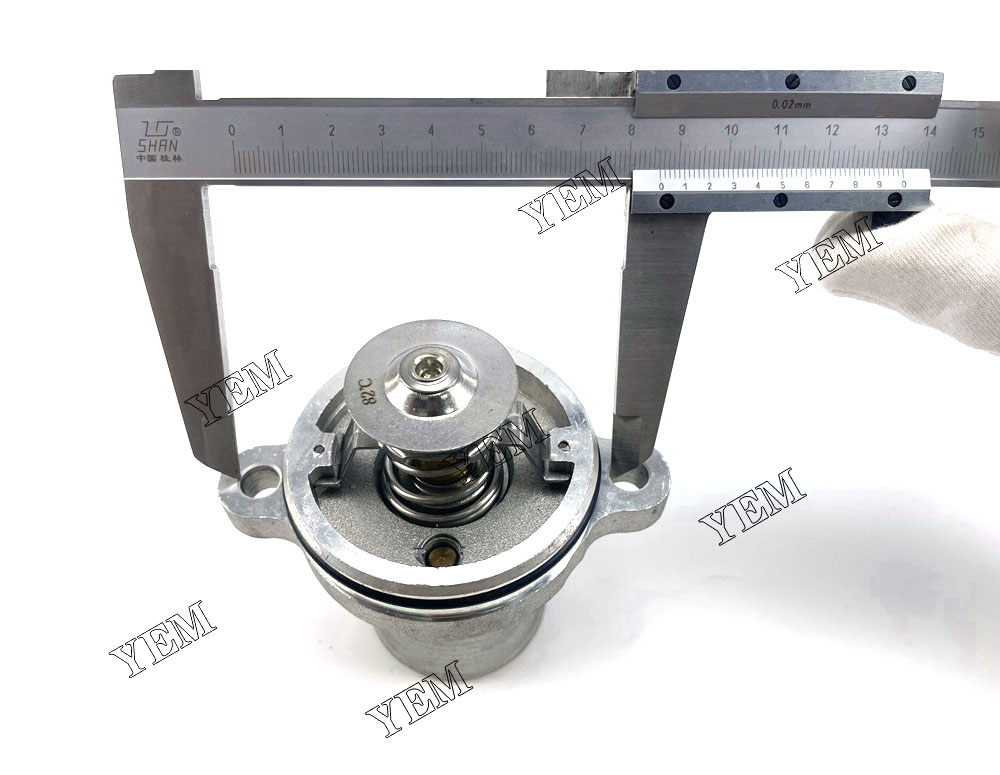
These types of engine thermostats can be selected and used according to the needs of the vehicle and specific application scenarios to ensure that the temperature control of the engine achieves the best results.
Energy saving effect of engine thermostat
Engine thermostats can provide the following energy savings:
- Reduce cold start fuel consumption: When the engine is cold start, the thermostat is closed to prevent the coolant from flowing into the engine cooling system. This reduces fuel consumption, as the engine requires more fuel to reach proper operating temperature during a cold start. Closing the thermostat can speed up the temperature rise of the engine, improve the thermal effect of the combustion chamber, and reduce fuel waste.
- Improve combustion efficiency: The combustion efficiency and fuel economy of the engine are usually the best in the appropriate operating temperature range. The thermostat can help keep the engine running steadily within this range, allowing for a more complete combustion of the fuel in the combustion chamber. Increased combustion efficiency can reduce energy waste and emissions, thereby achieving energy savings.
- Optimizing engine thermal management: The engine thermostat can help optimize the thermal management of the engine and ensure that the engine operates within a suitable temperature range. If the engine temperature is too low, it can lead to incomplete combustion of fuel, increased wear and emissions. If the engine temperature is too high, it may cause overheating and damage to engine components. By regulating temperature precisely, thermostats provide good thermal management, avoiding wasted energy and mechanical damage.
Overall, the engine thermostat can reduce cold start fuel consumption, improve combustion efficiency and optimize thermal management by optimizing the temperature control of the engine, thereby achieving energy saving effects. Not only does this reduce wasted energy, it also helps reduce the environmental impact and improves the fuel economy of the car.
Installation and usage guide
The following are guidelines for the installation and use of engine thermostats:
Installation Guide:
- Make sure to turn off the ignition switch of the engine and wait for the engine to cool down to a safe temperature before installing the thermostat.
- Locate the engine water intake or a suitable location in the coolant circulation system, this is usually in the upper part of the cooling system or between the supply and return lines.
- Select the proper installation method and tools according to the thermostat type you have selected and the vehicle manufacturer’s instructions.
- Install the thermostat to the selected position correctly, make sure the seal is good to avoid coolant leakage.
- Check the connection points and lines around the thermostat to make sure everything is connected properly.
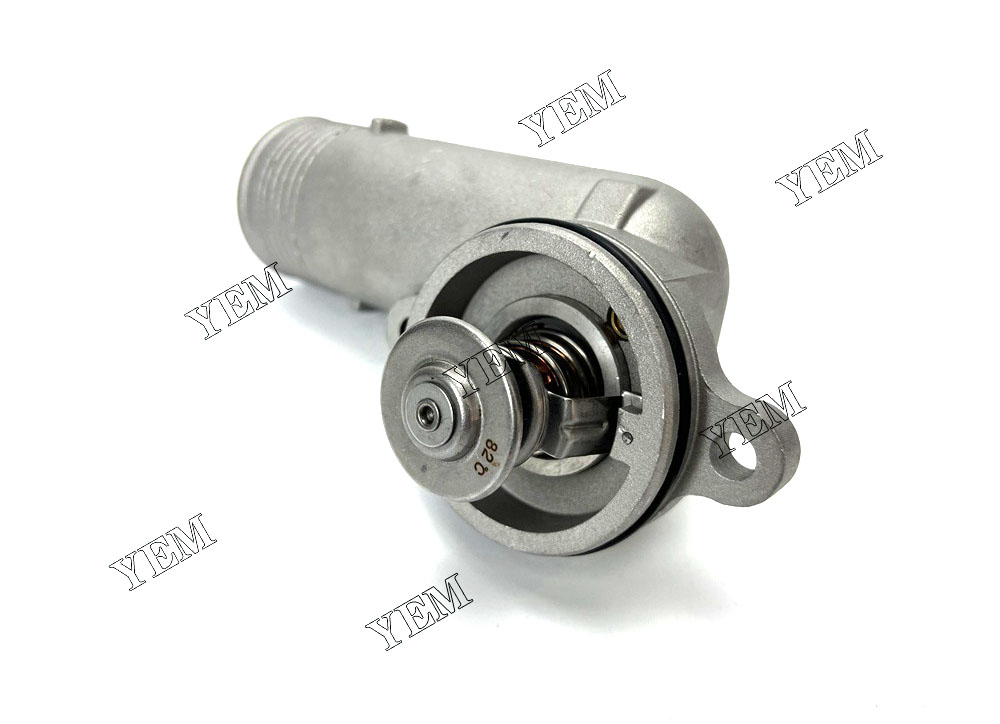
User’s guidance:
- Before using the engine, make sure that the thermostat has been installed correctly.
- For the mechanical thermostat, you don’t need to do extra operations, it will automatically control the flow of coolant according to the temperature.
- For adjustable or smart thermostats, you can adjust the temperature set point according to your needs. An adjustable thermostat usually has a knob or switch, while a smart thermostat can be adjusted through the vehicle’s infotainment system or a smartphone app.
- No additional intervention is required during normal vehicle operation. The thermostat will automatically control the flow of coolant according to the engine temperature to keep the engine within the proper operating temperature range.
- Regularly check the working condition of the thermostat and the level of the coolant. Make sure the thermostat is operating properly and that the coolant in the cooling system is at the correct level.
Note that installing and using an engine thermostat may require some expertise and skill. If you are not familiar with how your car engine works or your vehicle’s cooling system, seek professional help to ensure proper installation and operation.
Advantages and Disadvantages of Thermostat
Engine thermostats have the following advantages and disadvantages:
Advantage:
- Energy-saving effect: The engine thermostat can reduce fuel consumption during cold start and improve combustion efficiency, thereby achieving energy-saving effect. It can keep the engine in a suitable operating temperature range and reduce energy waste.
- Engine protection: The engine thermostat can help optimize the temperature control of the engine and effectively manage the heat of the engine. It prevents the engine from overheating, reduces the risk of mechanical damage, and extends engine life.
- Environmental protection: By improving combustion efficiency and reducing emissions, engine thermostats help reduce negative impacts on the environment. It can reduce exhaust emissions, reduce air pollution and greenhouse gas emissions.
- Stable control: The engine thermostat can provide stable temperature control to avoid adverse effects on engine performance and fuel economy caused by excessively high or low temperature. It ensures that the engine is in top working condition, providing the best power output and driving experience.
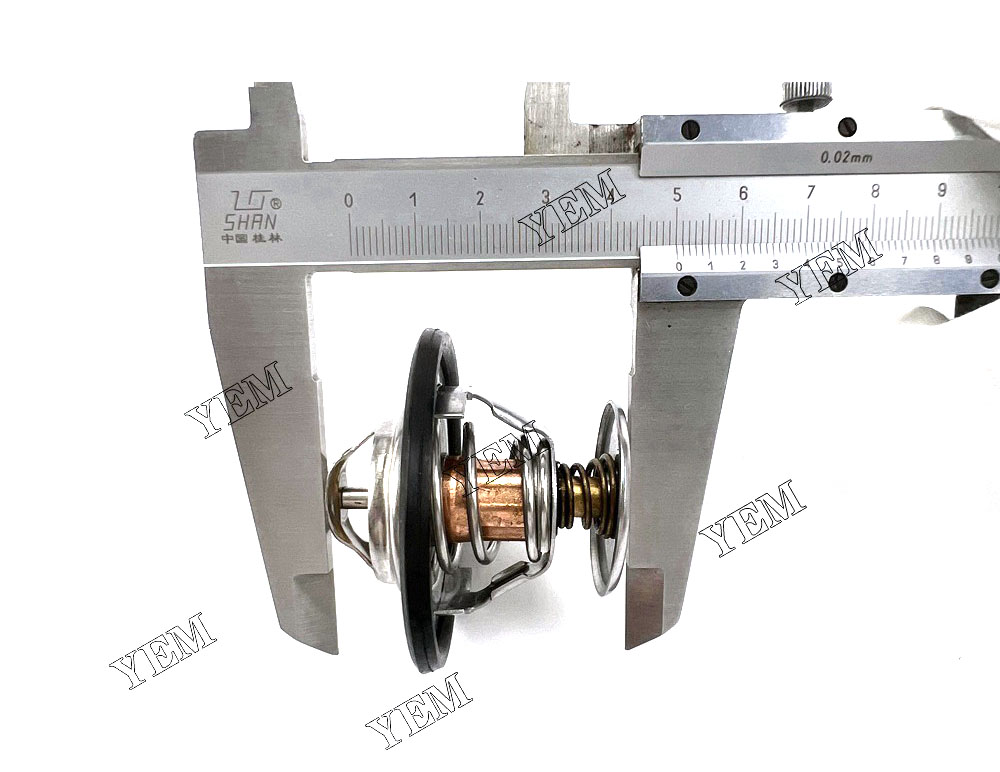
Shortcoming:
- Complicated installation: The installation of an engine thermostat may require some specialized knowledge and skills. For some vehicle and engine models, the installation process may be complicated and requires appropriate tools and equipment.
- Maintenance Required: The engine thermostat requires regular maintenance and inspection to ensure it is functioning properly. This may include checking the health of the thermostat, cleaning the cooling system, and monitoring the level and quality of the coolant.
- NOT SUITABLE FOR ALL ENVIRONMENTS: Engine thermostat effectiveness may vary with ambient and driving conditions. In some extreme environmental conditions, such as extremely low or high temperature regions, the effect of the thermostat may be limited.
Overall, the engine thermostat has obvious advantages in improving energy utilization, protecting the engine, reducing pollution and providing stable temperature control. However, factors such as the complexity of installation and maintenance and the limitations of environmental conditions need to be considered. An engine thermostat is a beneficial accessory for most conventional internal combustion engine vehicles. But for some modern vehicles with special designs or advanced control systems, the engine thermostat may already be built into the engine and cooling system, so its advantages and disadvantages may be affected by the vehicle manufacturer’s specific design and technology choices.
Thermostat application scenarios
Engine thermostats can be used in various application scenarios, including but not limited to the following:
- Cars and trucks: Engine thermostats are widely used in cars and trucks. It can help reduce fuel consumption during cold starts, improve combustion efficiency and reduce emissions. Additionally, the engine thermostat protects the engine from overheating and damage, extending the life of the engine.
- Marine and marine engines: In marine and marine engines, engine thermostats can help optimize fuel consumption and engine performance. They reduce fuel wastage during cold starts and ensure that the engine operates within the optimum operating temperature range for increased efficiency and reliability.
- Industrial and agricultural equipment: The engine thermostat is also suitable for various industrial and agricultural equipment, such as generators, pumps, agricultural tractors, etc. By controlling the temperature of the engine, fuel consumption can be reduced, equipment life can be extended, and work efficiency can be improved.
- High-performance vehicles: For high-performance vehicles, such as sports cars and racing cars, the engine thermostat can play a more important role. By ensuring that the engine operates within the optimum operating temperature range, it provides higher power output and drivability.
- Diesel Engines: Diesel engines are commonly used in industrial and commercial vehicles. Engine thermostats can help improve the combustion efficiency of diesel engines, reducing fuel consumption and emissions.
- High-temperature environment: For vehicles and equipment used in high-temperature environments, the engine thermostat can help control the temperature of the engine to avoid overheating and mechanical damage.
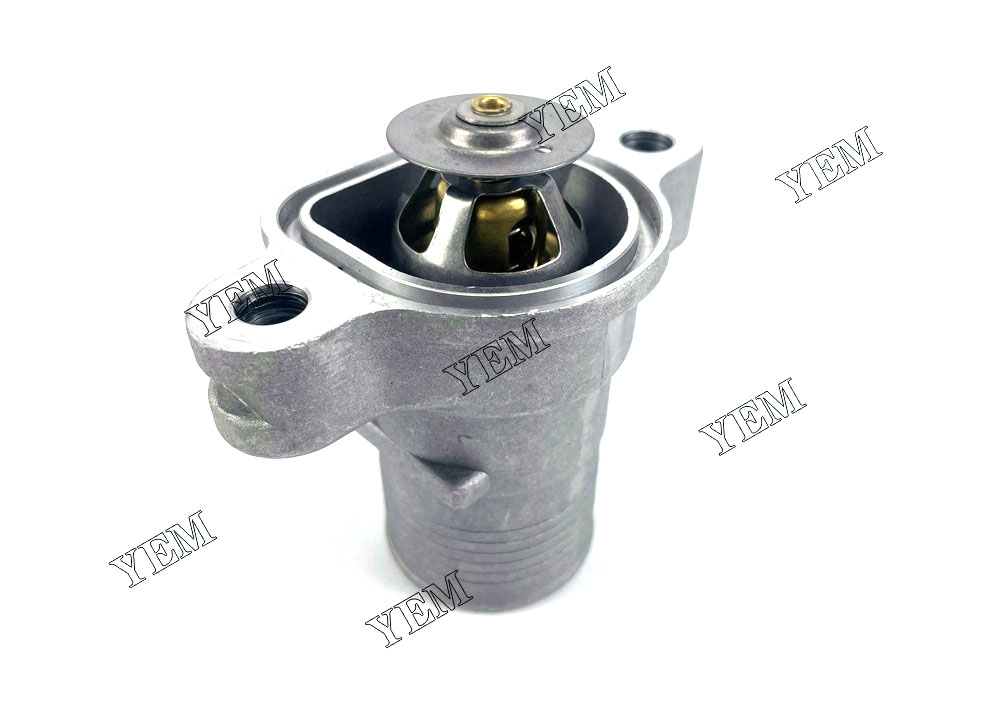
It is important to note that the use of engine thermostats may vary by vehicle and equipment type, specification and manufacturer’s requirements. It is recommended that when selecting and installing an engine thermostat, refer to the vehicle manufacturer’s recommendations and guidance to ensure that the appropriate thermostat type and correct installation method are selected.
Development trends of thermostats
As a part of energy saving and environmental protection technology, engine thermostat is constantly developing and improving. The following are some future development trends of engine thermostats:
- Intelligent control: With the development of automobile technology, the engine thermostat will become more intelligent. There will be smarter thermostat systems that can automatically perform precise temperature control based on multiple factors (such as vehicle speed, driving style, outside temperature, etc.) for optimal engine efficiency and emissions control.
- Multifunctional integration: Future engine thermostats may be integrated with other vehicle systems to further improve overall performance. For example, integration with the vehicle’s thermal management system, thermostat, electronic stability control system, etc., to achieve more advanced cooling control and temperature management functions.
- Material and design optimization: The material and design of the engine thermostat will continue to be optimized to improve heat transfer efficiency and durability. Using advanced materials and designs, it can better resist high temperature and chemical corrosion, and prolong the service life of the thermostat.
- New energy engine adaptability: With the development of new energy technologies, such as the popularity of hybrid, electric and fuel cell vehicles, the development of engine thermostats will also consider adapting to these new engines. The operating temperature and thermal management requirements of new energy engines may be different from traditional internal combustion engines, so the engine thermostat needs to be adjusted and adapted accordingly.
- Adaptive and predictive control: Future engine thermostats may have stronger adaptive capabilities and perform temperature control based on real-time data and predictive algorithms. This can be achieved by collecting, analyzing and utilizing vast amounts of vehicle and engine data to optimize temperature control and energy efficiency.
- System-level optimization: The optimization of the engine thermostat will develop from a single component to a vehicle system-level optimization. Consider cooling systems, air flow, thermal management, and power delivery for system-level optimization to achieve higher efficiency, lower emissions, and better performance.
In general, the development trend of engine thermostats will move towards intelligence, integration, adaptation to new energy engines and system-level optimization. These developments will further improve the thermal management efficiency of the engine, reduce energy waste and environmental pollution, and promote the advancement and sustainable development of automotive technology.
Engine Thermostat FAQs
Here are some frequently asked questions and corresponding answers about engine thermostats:
- Does an engine thermostat affect a vehicle’s fuel economy?
An engine thermostat can actually improve your vehicle’s fuel economy. It can help reduce fuel consumption during cold starts and provide more stable temperature control, allowing the engine to run within the optimum operating temperature range, thereby improving combustion efficiency and fuel utilization. - Will using the engine thermostat reduce the life of the engine?
The correct use and maintenance of the engine thermostat will not affect the life of the engine, but will help to protect the engine and prolong its life. The thermostat can help control the temperature of the engine, prevent overheating and mechanical damage, and provide a stable temperature environment, thereby reducing engine loss and wear. - Is the thermostat suitable for all types of engines?
Engine thermostats are suitable for most vehicles with conventional internal combustion engines, whether gasoline or diesel. However, the engine design and manufacturer’s requirements of a particular vehicle may vary, so the vehicle manufacturer’s guidance and recommendations should be consulted when selecting and installing a thermostat. - Does the thermostat affect the warm time of the engine?
The main function of the engine thermostat is to help control the temperature of the engine to keep it within the proper operating range. During a cold start, the thermostat may slightly prolong the warm-up time of the engine as it controls the flow of coolant to ensure the engine remains warmer before it reaches its optimum temperature. - Can I install the engine thermostat myself?
Installing an engine thermostat may require some expertise and skill. If you are inexperienced or unfamiliar with how vehicle cooling systems work, it is recommended to seek professional help to ensure proper installation and operation.
Note that these responses are general and provide information based on common experience. For a specific vehicle and engine, it is always recommended to refer to the vehicle manufacturer’s instructions and guidance for the most accurate information and recommendations.
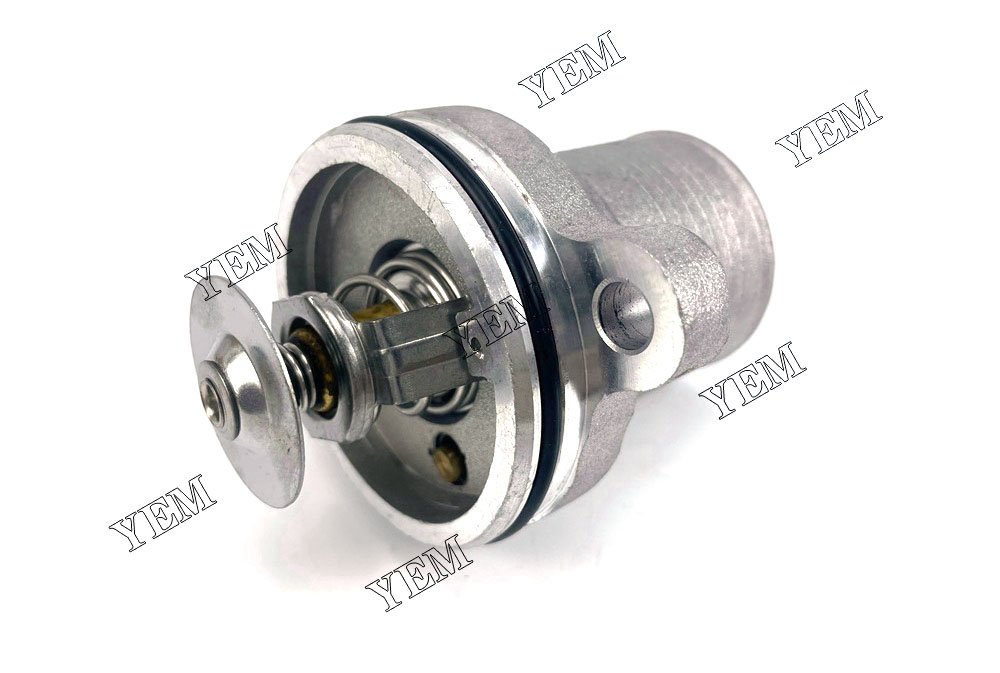
Contact us
Our YEM team comprises a skilled and passionate group of engineers and technicians specializing in excavator parts. With years of experience in the industry, we are dedicated to delivering top-quality excavator accessories and comprehensive solutions tailored to meet our customers’ needs.
We pride ourselves on our profound understanding of excavators, their working principles, and the functionalities of accessories. This enables us to provide accurate and professional recommendations to our customers. In collaboration with renowned excavator parts manufacturers and suppliers, we ensure the products we offer are of exceptional quality and reliability.
Our expertise covers all types and brands of excavators. Whether it’s replacing a damaged excavator accessory or upgrading the excavator’s function and performance, our team can provide a comprehensive solution. We consider customers’ requirements and budget to provide the most suitable accessory options while ensuring smooth installation and maintenance processes.
Beyond supplying excavator accessories, our services encompass transportation, installation, repairs, and after-sales support. Customer satisfaction is our utmost priority, and we strive to deliver outstanding service and the best solutions.
Thank you for your interest in the YEM excavator parts team. Should you have any inquiries or requirements, please do not hesitate to contact us. We look forward to providing you with high-quality excavator accessories and professional technical support.
